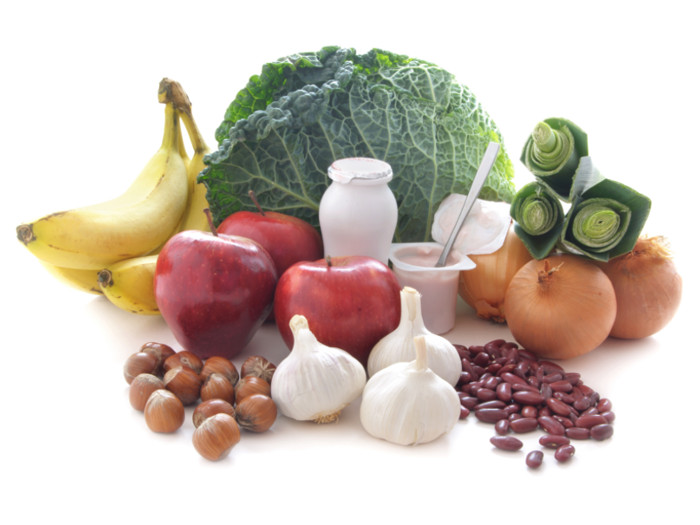Many people naturally have probiotic-rich foods in their diet, but if you are struggling with gastrointestinal health, eating a more probiotic-rich diet may be beneficial.
Role of Probiotics or Fermented Foods
Probiotics or fermented foods are foods that contain live bacteria cultures that can improve the microflora environment of your gut. The beneficial bacteria in the stomach is incredibly important both for digestion and immune health, so eating foods that are high in probiotics is an easy (and delicious) way to boost your overall health. Fermented foods are a particularly rich source of these important bacteria. [1]
Foods Rich in Probiotics
The best probiotic-rich foods include kefir, traditional yogurt, tempeh, miso, kombucha, natto, buttermilk, sauerkraut, dark chocolate, and green olives, among others.

Probiotics are good for you and are found in many foods. Photo Credit: Shutterstock
Yogurt
One of the most common probiotic foods that find their way into your diet is yogurt, but be sure that you only get yogurt from goat’s or sheep’s milk, and be sure that it comes from grass-fed organic animals, as these will provide the highest level of probiotics. [2]
Tempeh
This fermented soybean product is popular with vegetarians and vegans and will deliver a good amount of probiotics, as it is cultured using Rhizopus oligosporus and can work wonders on your digestive system. [3]
Miso
When you ferment soybeans, brown rice or barley with a particular type of fungi, called koji, you can create miso. This is a popular Japanese food and can help to rebalance the bacteria in your gut. [4]
Kombucha
This drink is gaining popularity all over the world and it is made by fermenting black tea with a blended colony of bacteria and yeast. This creates a powerful beverage that can detoxify the body and stimulate digestive processes.
Natto
When you ferment soybeans, you can induce the growth of a powerful bacteria called Bacillus subtilis, which has been proven to protect the heart, reduce inflammation, and increase nutrient absorption. [5]
Dark Chocolate
Known as a sweet treat, dark chocolate can support the wellness and functioning of bacteria in the gut and is known to regulate bowel movements.
Green Olives
After fermenting green olives, you can create an antioxidant and nutrient-dense probiotic food to improve digestive speed. [6]
Kefir
This fermented probiotic drink is made from cow’s or goat’s milk and helps in increasing bone health, improving digestive health, and staves infections. [7]
Kimchi
Kimchi is a Korean side dish, often having cabbage as its main ingredient. It is rich in lactic acid, iron, and other key minerals, which help in improving the digestion.
Pickles
Pickles (pickled cucumbers) are one of the popular probiotics used all over the world. They are prepared by adding cucumbers to water and salt solution. These pickled cucumbers are left to ferment for some time and then they become a healthy source of probiotic bacteria, which smoothens the digestion.
Beer & Wine
Fermented alcoholic drinks like beer and wine also contain many of the probiotic benefits. They are a great source of antioxidants and vitamins, which help in reducing blood clots and regulating cholesterol levels.
Green Peas
Green peas contain Leuconostoc mesenteroides, which is a potent probiotic that boosts the immune system. They are widely available and can be added easily to one’s diet.
